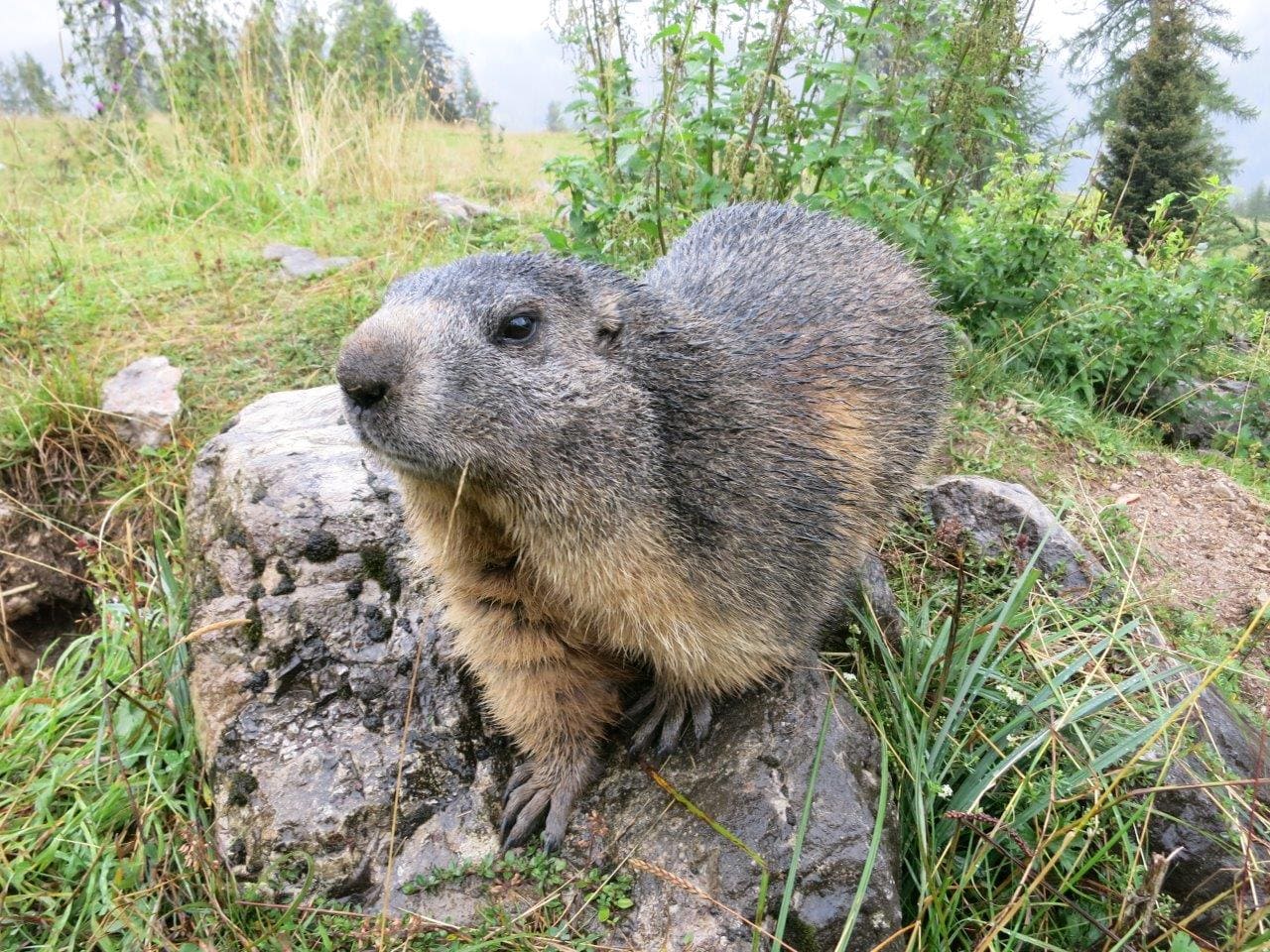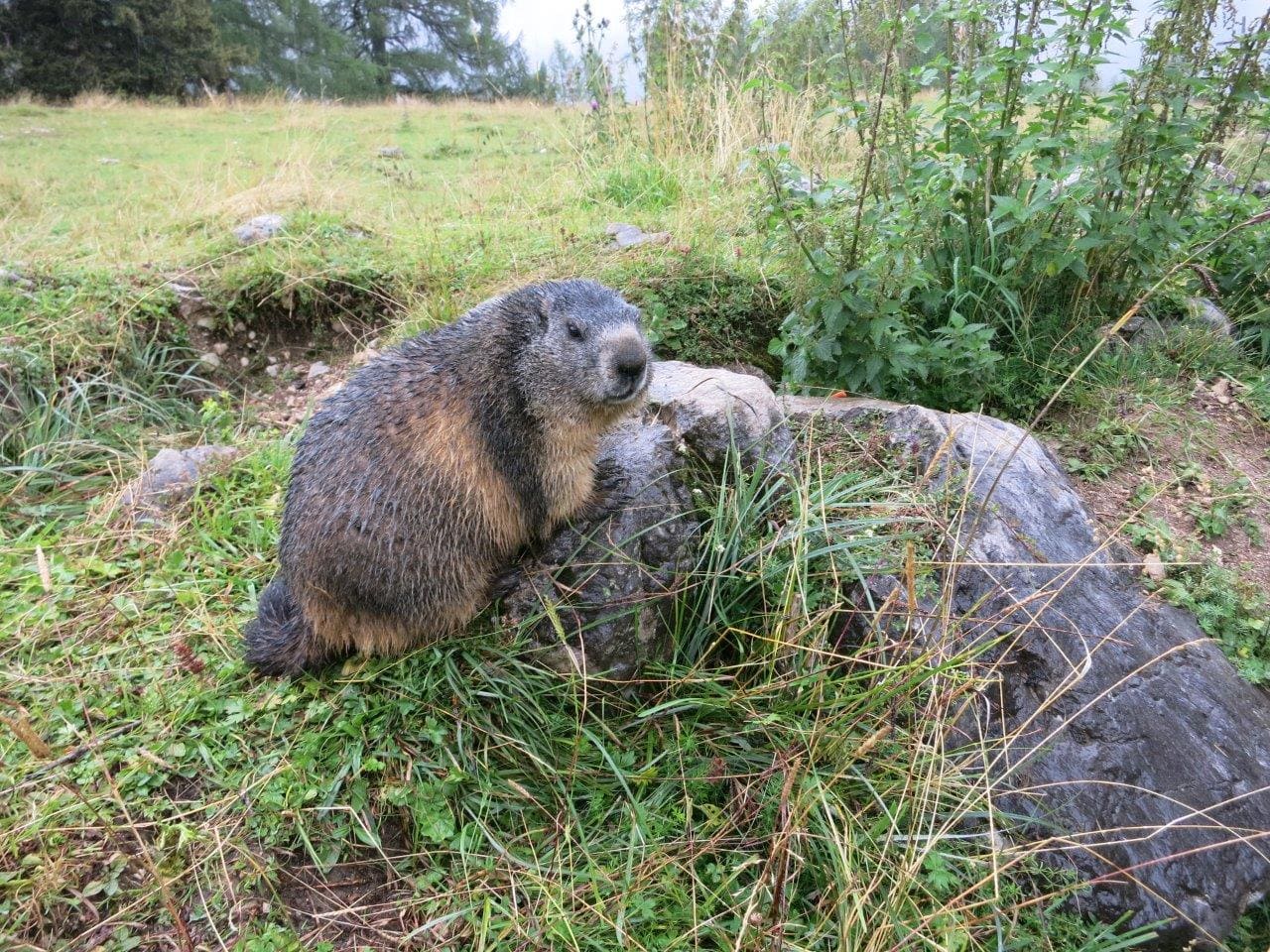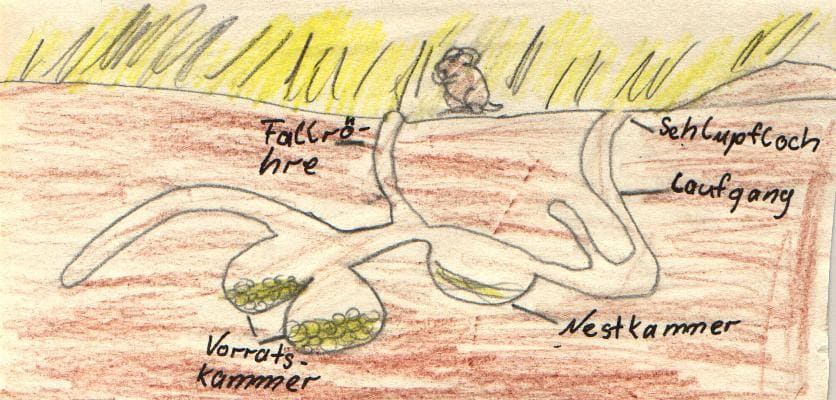Marmots
The marmots, also known as "Mankei,“
live in colonies around the Hochkönig
and can live up to 15 years. During the
day, marmots leave their burrows and are
primarily active on the ground, as they
are not good climbers. Their diet consists
of grasses and herbs, occasionally fruits,
seeds, and insects. Marmots can be
observed here around the rocks.
For rodents, marmots are quite large.
Depending on the species, they have a
head-body length of 30 to 60 cm, with
an additional 10 to 25 cm for the tail.
Their weight ranges from 3 to 7
kilograms.
The color of their fur varies between
species but is generally brownish. The
body of the animals is robust, with a short
tail and short, rounded ears. The legs are
also short and stout.
Marmots build extensive tunnel systems
consisting of escape tunnels and a
main burrow. It is often challenging to
distinguish between them, as not every
burrow is completed and used, and there
are also dead-end tunnels (toilet tunnels).
The tunnels can reach lengths of 10 to
70 meters; the longest recorded tunnel
measured 113 meters.
Kids
From the life of Max Murmeltier
Once upon a time there was a little marmot called Max who lived in beautiful Pongau. Max was curious and adventurous. Every morning he woke up, stretched out of his cosy burrow and hopped out into nature full of anticipation to explore the world a little further every day.
One day, Max decided to take his friends on an adventure. He strolled happily through the mountains and was soon joined by his friends, Mia, Paul and Emma. Together they set off to discover the secret valley that the older marmots had told them about. On their journey, they travelled through forests, crossed clear streams and climbed over stony paths. But suddenly they heard a loud stomping and screaming. Max stopped and listened. It was a human being nearby! All the marmots became frightened, but Max was determined to protect his friends. He remembered his grandfather's stories about the cleverness of marmots. Max suggested hiding quietly until the human moved on.
After a while, they heard the sounds of the human disappear. They cautiously ventured out of their hiding place and continued their journey. At last they reached the secret valley. Once there, they discovered a breathtaking landscape full of colourful flowers and bubbling streams. They even saw other marmots sleeping peacefully in the sun.
Max and his friends returned to their den full of joy and pride in their adventure. They knew that together they could do anything and that their friendship was their greatest strength. And so ended their exciting adventure in beautiful Pongau.
From the life of marmots
Imagine you are in the mountains and discover a marmot. It's so cute with its fluffy fur and little beady eyes. You really want to watch it and maybe even take a photo. But do you know why it's important to be quiet and not disturb the wild animals?
Wild animals such as marmots live in the wild, where they should feel safe. If they feel disturbed or threatened, they can get scared and run away. This can be very stressful for them and even affect their health. Imagine how you would feel if someone suddenly frightened or threatened you. You would also feel uncomfortable and anxious, wouldn't you?
In addition, too much noise or disturbance can disrupt the animals' natural habitats. If we keep quiet, wildlife can live in peace and look after their families. We should always remember that the forest is their home and we are visitors. We don't want them to feel uncomfortable or disturbed.
It is also important to remember that some wild animals, such as marmots, make an important contribution to the ecosystem. They help to maintain the balance in nature by eating certain plants or creating habitats for other animals. So if we respect wild animals and keep their peace, we help to keep nature in balance.
Remember this the next time you are out in nature and spot wild animals. Be respectful, stay calm and observe them from a distance. In this way, we can all help to ensure that wild animals can live happily and healthily in their homes.
The marmots
The importance of behaving quietly and respectfully in nature, especially towards wild animals such as marmots, goes far beyond mere politeness. It is about preserving the delicate balance of ecosystems and protecting animal habitats.
Wild animals are not only fascinating to watch, but also play a crucial role in the ecosystem. Marmots, for example, contribute to the dispersal of seeds and thus influence plant growth. If we disturb or frighten them, this can have a negative impact on their way of life and their environment. Stress from human influences can change their behaviour, affect their reproduction and even reduce their chances of survival.
In addition, noise and disturbance in nature can drive other animals away or even lead to their injury. A sudden scare can cause animals to panic and injure themselves by fleeing or running into obstacles. As a result, entire populations of wild animals can be negatively affected.
It is also about respecting the habitats of other living beings. The forest and mountains are not only our playgrounds, but also home to countless animal and plant species. If we behave considerately and maintain natural tranquillity, we can ensure that these habitats remain intact and are preserved for future generations.
By being aware of how our actions affect the environment, we can help to build a sustainable relationship with nature. By respecting the needs and boundaries of other living creatures and moving quietly and mindfully in their environment, we help to preserve the diversity and beauty of nature. Ultimately, it is a question of responsibility and respect for the wildlife and ecosystems we all share.



